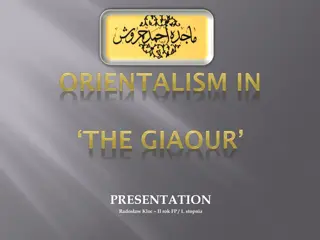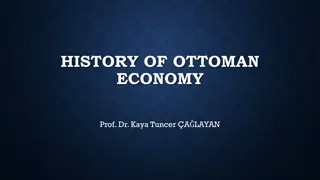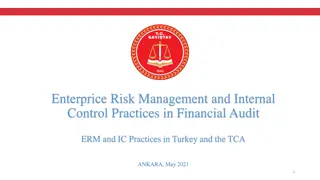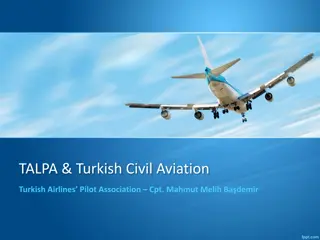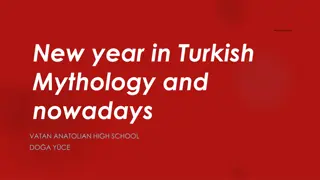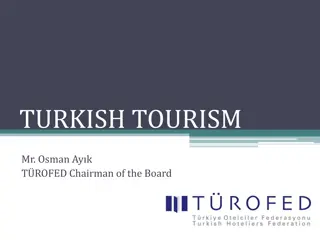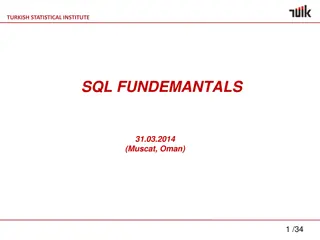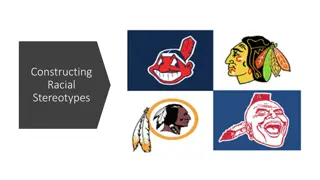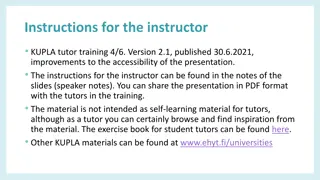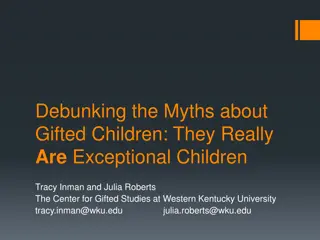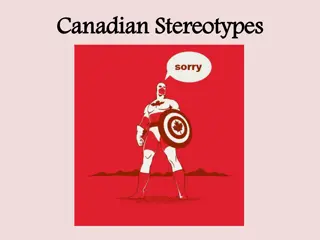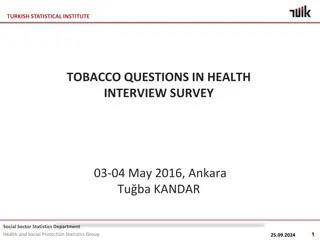Debunking Turkish Stereotypes
Turkey defies common stereotypes such as riding camels and being extremely conservative. The diverse Turkish cuisine extends beyond kebabs, and the misconception of women in burkas is clarified. Turkey is a blend of modern and traditional, liberal and conservative, offering a rich cultural experience that goes beyond misconceptions.
Download Presentation

Please find below an Image/Link to download the presentation.
The content on the website is provided AS IS for your information and personal use only. It may not be sold, licensed, or shared on other websites without obtaining consent from the author.If you encounter any issues during the download, it is possible that the publisher has removed the file from their server.
You are allowed to download the files provided on this website for personal or commercial use, subject to the condition that they are used lawfully. All files are the property of their respective owners.
The content on the website is provided AS IS for your information and personal use only. It may not be sold, licensed, or shared on other websites without obtaining consent from the author.
E N D
Presentation Transcript
Every stereotypes and Turkey definitely has its fair share of faulty assumptions when it comes to its culture and traditions. From men with moustaches that only wear Fez hats to the exaggerated notion of its conservative values country has its well-known
Turks Ride Camels We re not sure where this stereotype came from but nearly as ridiculous as saying that Australians ride kangaroos. It s actually tourists that ride camels in Turkey as a fun attraction is some regions, but we can definitely say that camels are not a popular form of transportation. Turkey doesn t have deserts and so the few camels that are around are not native to the country. However, there is one interesting camel-centric event that takes place every year and that s the camel wrestling league. Yes, the camel wrestling spectacle does travel through many villages every year from November until March.
Turkey is a Very Conservative Country It s true that Turkey is a mostly Muslim country with a lot of very conservative people, however, like the dual nature of all things, Turkey also has a lot of very liberal people. For example, in Istanbul, some neighbourhoods like Fatih are very conservative, while others like Galata or Arnavutk y are full of trendy bars, restaurants, and art galleries. Similarly, cities in the inland regions are relatively conservative, while the coastal regions are mostly liberal (especially Izmir). What s true about Turkey is that it s a mixture of everything, western and eastern, modern and traditional, liberal and conservative, so focusing solely on one section of the population is not fair.
Turkish Cuisine Consists Mainly of Kebab This is one of the most offensive stereotypes for many Turks because of their love for Turkish cuisine and its multitudinous dishes. Turkey has many different regions all of which have their own variety of ingredients (due to geography) and cuisines as a consequence. As such, the richness of the Turkish kitchen is undeniable and it s narrow-minded to ignore all that and focus on the kebab. Yes, the kebab in Turkey is excellent, but there s also a whole world of meze varieties, fresh fish, vegetable dishes, desserts, sweet and savoury pastries, soups, and roasts plus we haven t even mentioned the myriad of recipes that were developed in the imperial Ottoman kitchens
Women walk around in Burkas, covered from head to toe, only showing their eyes. Wrong. It s very rare to see women wearing Burkas in Turkey, it is discouraged. A lot of women do wear headscarves, although this is changing too.. I imagine a lot of the big cities to be the same. Of course, in strictly religious rural towns and more traditional families, a lot of women do still cover up, but it is their choice
They speak a dialect of arabic and they are arab. Turkish belongs to the Altay branch of the Ural-Altaic linguistic family, same as Finnish and Hungarian. It is the westernmost of the Turkic languages spoken across Central Asia and is generally classified as a member of the South-West group, also known as the Oguz group. Other Turkic languages, all of which are closely related, include Azerbaijani (Azeri), Kazakh, Kyrgyz, Tatar, Turkmen, Uighur, Uzbek, and many others spoken from the Balkans across Central Asia into northwestern China and southern Siberia. Turkic languages are often grouped with Mongolian and Tungusic languages in the Altaic language family. . Except for the religion, they don't have much in common. Turks are originally nomadic Central asian people speaking a completely different language which is called Turkish. Unlike Arabic, the Turkish language is written in Latin alphabet.


